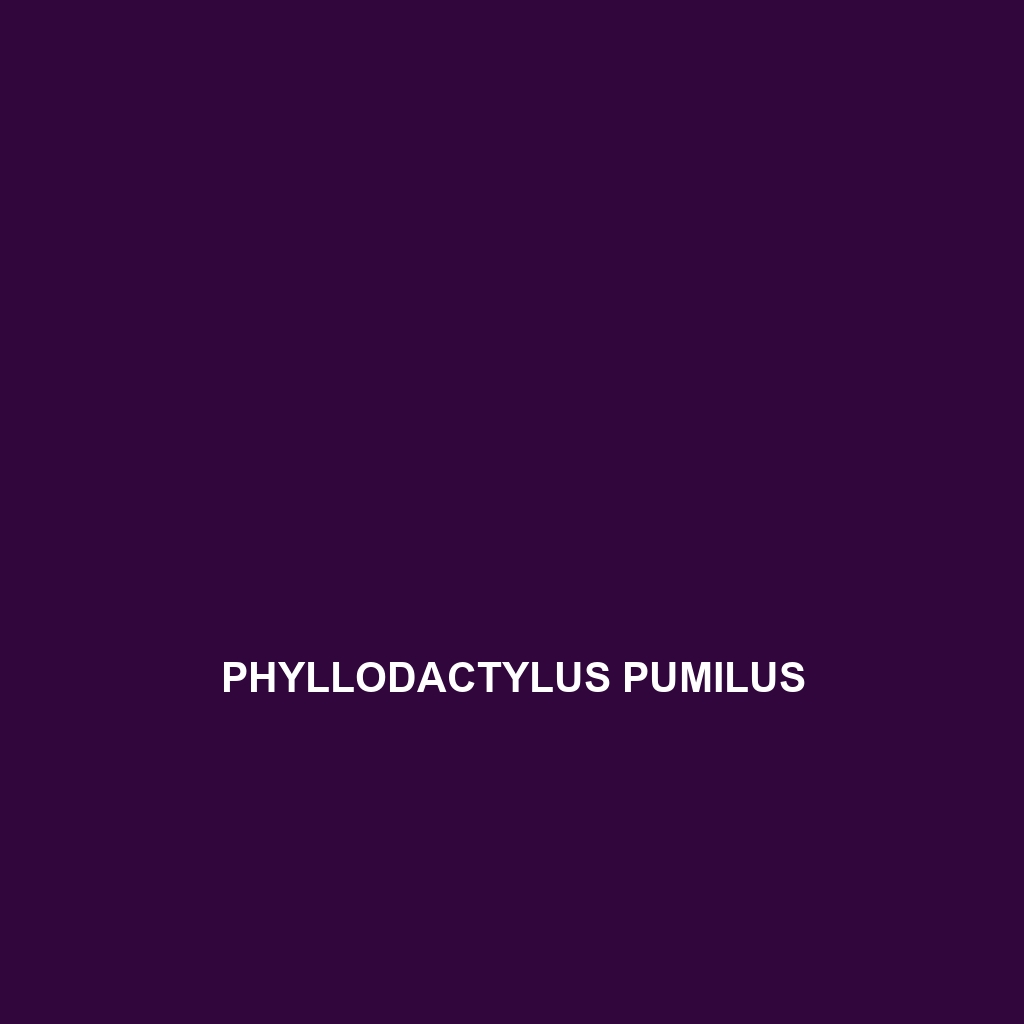Common Name
Phyllodactylus pumilus
Scientific Name
Phyllodactylus pumilus
Habitat
Phyllodactylus pumilus, commonly known as the small leaf-toed gecko, primarily inhabits arid and semi-arid regions across central and northern South America. This species thrives in diverse environments such as savannas, dry forests, and rocky outcrops. Its geographical range extends from the coastal regions of Ecuador to the warmer interior regions of Colombia and Venezuela. The climate in these areas varies from tropical to subtropical, often characterized by a seasonal rainfall pattern, which influences the biodiversity and ecological interactions within their habitats. The gecko is particularly adept at clinging to surfaces, making its home in areas where it can find ample shelter during the hotter parts of the day.
Physical Characteristics
Physically, Phyllodactylus pumilus exhibits a small, slender body that typically measures between 4 to 6 inches in length. The skin texture is slightly granular, featuring a mix of earthy tones that range from light brown to grey, allowing it to blend seamlessly into its surroundings. A distinctive characteristic of this species is its flattened toes, which help the gecko to adhere to various surfaces, including rocks and tree bark. The eyes are large and capable of nocturnal vision, enabling it to hunt and navigate effectively in low-light conditions. Additionally, the tail is relatively long and may serve as a defense mechanism, detaching easily if threatened by predators.
Behavior
Phyllodactylus pumilus is primarily nocturnal, exhibiting heightened activity during the cooler evening hours. This gecko is often found resting on vertical surfaces or trees, taking advantage of its camouflaged appearance to evade predators. Socially, these geckos are somewhat solitary, coming together primarily during the mating season. They engage in complex mating rituals, which include courtship displays and vocalizations to attract potential mates. In terms of territorial behavior, males may display aggressive tendencies, asserting dominance over other males during breeding periods. Moreover, these reptiles exhibit a remarkable ability to climb, enabling them to escape danger quickly.
Diet
The diet of Phyllodactylus pumilus is primarily insectivorous, with a preference for small insects such as crickets, beetles, and moths. It employs a sit-and-wait strategy, using its keen eyesight to hunt from a concealed position before rapidly capturing its prey with its well-adapted tongue. Although primarily insectivorous, this gecko may occasionally consume nectar and other plant matter, suggesting a slight omnivorous tendency. This varied diet plays a significant role in controlling insect populations in its habitat, assisting in maintaining ecological balance.
Reproduction
During the mating season, which typically occurs in the warmer months, male Phyllodactylus pumilus perform several courtship behaviors to attract females. After successful mating, the female lays about 2 to 4 eggs in a concealed location within moist soil or leaf litter, which provides the necessary humidity for the developing embryos. The gestation period lasts approximately 30 to 60 days, after which the hatchlings emerge fully formed and miniature replicas of the adults. Parental care is minimal, and the young are immediately independent, seeking shelter and food on their own as they start their lives.
Conservation Status
The conservation status of Phyllodactylus pumilus is currently classified as Least Concern according to the International Union for Conservation of Nature (IUCN). However, habitat loss due to agricultural expansion, urban development, and climate change poses potential threats to their populations. Conservation efforts aimed at habitat protection and sustainable land-use practices are crucial to ensure the survival of this species in its natural environment.
Interesting Facts
One of the most fascinating aspects of Phyllodactylus pumilus is its exceptional ability to regenerate lost tails. This adaptation not only aids in evading predators but also allows the gecko to retain balance and mobility if it does lose its tail. Additionally, this species can exhibit a unique color change in response to environmental factors such as temperature and light, enhancing its camouflage. Their adaptability to various environmental conditions has allowed them to thrive in fragmented habitats.
Role in Ecosystem
Phyllodactylus pumilus plays a significant ecological role within the ecosystems they inhabit. As insectivores, they contribute to controlling insect populations, which helps maintain the balance within their environment. This gecko functions as both a predator and prey within the food web, supporting various species, including birds, snakes, and larger mammals. Their presence is indicative of a healthy ecosystem, highlighting the importance of preserving their habitats to support overall biodiversity.
